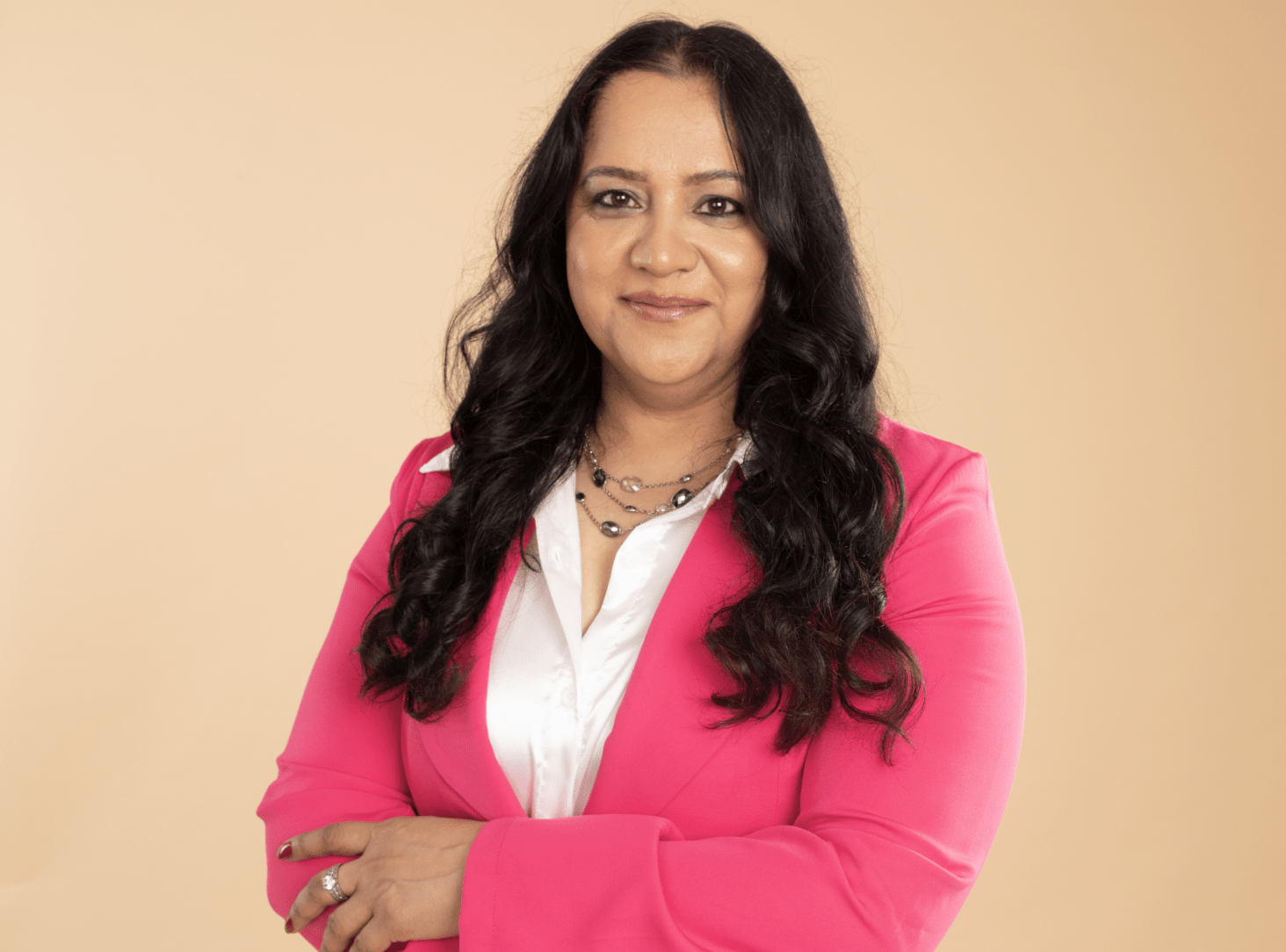Tamanna Singh is an iconic name in the entrepreneurial realm — with over two decades of experience as a founder, investor, philanthropist, and mentor, she has built thriving businesses and guided startups to reach their full potential. Her latest endeavours, House of Wellness and Menoveda, are trailblazers in the direct-to-consumer women’s wellness market.

“Success isn’t about how much money you make; it’s about the difference you make in people’s lives,” Tamanna says. This mantra is the heart of her work and the guiding principle behind everything she does. She recently shared her insights on scaling D2C businesses in our invite-only session Financing Your D2C Business with Mahila Money. Tamanna shared best practices and strategies for cash flow forecasting in D2C businesses. She also spoke at length about the financing challenges that D2C entrepreneurs face and their financing needs. “Know your numbers, set realistic goals, and closely monitor expenses,” Tamanna advises.
Tamanna is not only a savvy business owner, but also has a fun and quirky side! She loves creating a bunch of WhatsApp groups with just herself, where she can leave voice notes on her business plans and expenses. We already imagine her recording a message saying, “Arrr, me hearties, it looks like we’ve got a hefty expense on our hands this month. Time to batten down the hatches and tighten our belts!” Who knew managing finances could be so entertaining, right?
Tamanna’s contributions to the business world have not gone unnoticed. She was recently featured in MidDay India’s most inspiring entrepreneurs to look out for in 2023, and her UberLuxIndia group of companies is pioneering affordable luxury in India.
How did the entrepreneurial bug bite you, and what led to the birth of House of Wellness?
Tamanna: “As a Fauji wife, frequent relocations posed challenges, but partnering with Fashion TV India in 2014 gave us the confidence to create something of our own. We discovered that people were comfortable doing business and betting their money on us. That experience gave us the confidence to bet on ourselves and use the knowledge and expertise we had accumulated over the years to create something of our own. My husband and I started House of Wellness in 2015, offering affordable luxury personal care products previously only available abroad. We began with plant-based, pivoted to organic, and now offer ayurvedic products. It’s been an incredible journey, and I’m proud of what we’ve accomplished.”
Tell us about Menoveda, your most recent D2C venture.
Tamanna: “After a decade in the multi-franchise business and D2C space, COVID prompted me to shift focus to mentoring and giving back. As an army wife involved in supporting women entrepreneurs and being part of the ‘Army Welfare Wife Association’ and working with the ‘Veer Naris – the widows of fallen soldiers’, menopause emerged as a cause close to my heart. I realised there was a lack of solutions for middle-aged women going through this taboo subject. We surveyed 5,000 women and found frustration with the societal perceptions of menopause. We launched Menoveda to provide women with the support and solutions they need to take pride in their age and health.”
“We surveyed 5,000 women last year and found that women aged 45–50 were frustrated and weren’t getting the needed solutions.”
– Tamanna Singh
Where did the first capital for launching your business come from?
Tamanna: “Honestly, my husband and I sold some of our properties to get the capital to launch our first business. We were betting on ourselves and went all in. However, we learned from our mistakes and realised that it’s not a sustainable way to run a business. So, when we started House of Wellness, we ensured we were cash-positive and revenue positive. We were bootstrapped, and we managed the cash flow very efficiently. We received many queries and interest from VCs for our third venture but decided to self-fund it. Being cash positive gives you the power to dictate your terms, and that’s how we plan to take it forward.”
From House of Wellness to Menoveda, what was the learning curve for managing funds for both businesses? Was it easier or more complex the third time around?
Tamanna: “In my first business, I made the mistake of using the profits from property sales to sustain the business, creating a vicious cycle. With House of Wellness and Menoveda, we focus on generating revenue from the business and reinvesting in marketing and other areas. Rather than cutting costs, we sell products at a slightly higher price and prioritise product quality over discounts. This approach allows the business to generate its own funds and avoid the pitfalls of discounting.”
“ I am the ’Memsaab’ in the business and the ‘Bai’ as well.”
– Tamanna Singh

What are some of the key financial metrics that D2C businesses should focus on to forecast cash flow accurately?
Tamanna: “As a D2C business owner, it’s crucial to focus on key financial metrics for accurate cash flow forecasting.
Firstly, understanding the inventory cycle is critical. Negotiating favourable terms and having multiple manufacturers helps avoid excessive inventory. Secondly, don’t overspend on labels and packaging initially. Get the product out there and let the market provide feedback. Carefully plan payouts and know when to collect receivables to avoid cash flow issues. Weekly plans are better than monthly. Have a clear funding path and runway. Revenue is the ultimate goal. If cash positive, it’s like a cherry on top. Lastly, avoid unnecessary expenditures, such as high-paying consultants, and work smartly to achieve goals. In the past, I got many consultants — very high-paying ones. But now I don’t believe in that concept (Laughs). But I do have mentors, and I do have advisors!
As a business owner, I wear multiple hats and take on different roles when needed. It’s all about structuring things properly. I am the ‘Memsaab’ in the business and the ‘Bai’ as well.”
Can you walk us through your process for creating a cash flow forecast and the tools and resources you use?
Tamanna: “To improve cash flow forecasting, it’s essential to analyze your business in detail and plan accordingly. Consider the value propositions you offer customers, like sales during holidays or special events. However, it’s important to understand that cash flow won’t be immediate and plan accordingly.
Pricing leverage is also critical, and instead of lowering costs, you can offer freebies while maintaining the value proposition and not go cheap.
When facing a cash crunch, rather than diluting your stock, think creatively about how to manage dead inventory, such as using it for influencer activity or trading it for PR value. It’s just brainstorming and thinking out of the box about what is the best value you can get.
Small improvements each week, such as promotions or contests, can also increase sales volume. Even if there is a change in one percent of every sale per day, look at the annual or the compounded sale you will do at the end of the year.
Additionally, managing resources is crucial, such as sharing resources between departments or splitting salaries between founders. With attention to detail and creative thinking, cash flow forecasting can be improved.”
And how do you ensure that your cash flow forecast stays accurate and up-to-date in a fast-changing business environment?
Tamanna: “As a business owner, having an accurate cash flow forecast in a rapidly evolving environment is crucial. To achieve this, I implement a few strategies that have worked well for me.
Firstly, I prioritise saving a minimum of 5% of the budget allocated to each department. This allows us to accumulate some extra funds that can be used in case of any unforeseen expenses and encourages us to be mindful of our spending.
Secondly, we keep some extra funds aside for promotions and other marketing expenses.
Thirdly, we prioritise spending based on current needs, doing things phase-wise for three months. We spend on the right promotion, PR, marketing, or hiring resources depending on the need.
Lastly, we have implemented a chit system for team motivation and growth where one section of the business can receive a bonus fund. End of the day, it also has to result in revenue or at least some growth. It’s a carrot-and-stick business — give and take.”
“We have implemented a chit system where one section of the business can receive a bonus fund. This not only motivates the team but also encourages them to contribute to the growth of the company”
– Tamanna Singh
In your opinion, what are the most common mistakes that D2C businesses make when forecasting cash flow? How can they avoid them?
Tamanna: “Overconfidence can be a fatal mistake in cash flow forecasting for D2C businesses. As an entrepreneur, I understand the importance of knowing your payment cycle and building a support system. However, unexpected expenses and large orders can happen, so being proactive and prepared is crucial. This means leveraging inventory, building relationships with banks, and accessing alternative funding sources. Don’t wait for something to happen — plan for potential opportunities and challenges to ensure the success of your business.”
How do you balance investment in growth with maintaining healthy cash flow in your D2C businesses?
Tamanna: “As a business owner, balancing investment in growth with healthy cash flow is a constant challenge. It’s important to remember that cash flow is the lifeblood of any business. I prioritise tracking key metrics such as revenue and profit margins to achieve this. Being disciplined in spending and prioritising investments that impact the bottom line is essential. This means not getting distracted by shiny new opportunities and strategically allocating resources. Ultimately, success is sustained growth with healthy cash flow. A thriving business can be built by focusing on the numbers and making smart investments.”
“It’s important to remember that cash flow is the lifeblood of any business”
– Tamanna Singh
How important is understanding customer behaviour and purchasing patterns in forecasting cash flow for a D2C business?
Tamanna: “Understanding customer behaviour is crucial in forecasting cash flow for a D2C business. As the founder of a new brand, I learned this firsthand. For example, we noticed a lot of traffic at night and found out menopausal women suffer from insomnia. We promoted more heavily then and saw great results. Customers are everything — in a recent campaign, real women with no makeup got a better response than celebs. My advice? Be honest with your customers and focus on understanding their behaviour. At the end of the day, the customer is the queen!”
Was there a time when you faced a cash flow challenge in your business? How did you overcome it?
Tamanna: “As a growing company, tough decisions on when to invest in collaboration opportunities arise. Delaying these opportunities can result in missed advantages, but investing requires surplus cash. Our focus is on quality work, as we believe it’s important for our brand’s consistency. Speed and execution are critical, with competition increasing in the next 6 months. We aim to be a pioneer in our industry, making smart cash flow decisions to stay ahead.”
“You do not rise to the level of your goals. You fall to the level of your systems” Failure is inevitable, and the lessons you learn from it are priceless.
-Tamanna Singh
Finally, what advice do you have for entrepreneurs starting out in the D2C space who may not have much experience forecasting cash flow? Any other best practices or tips that you have found useful and would want to leave our audiences with?
Tamanna: “As an entrepreneur starting in the D2C space, I advise embracing failure and learning from it. There is a beautiful saying — “You do not rise to the level of your goals. You fall to the level of your systems” Failure is inevitable, and the lessons you learn from it are priceless. Additionally, it’s essential to have plans in place to help you manage your cash flow. As women, we have natural organisational skills that we can utilise to create a budget and predict where our money will come from. Don’t fear technology or numbers; don’t expect someone else to handle it for you. It’s your business, and being logical and strategic is the key. As an exercise, try putting all your numbers on a single sheet of paper to help you visualise your cash flow and plan accordingly. Remember that money may not come in immediately, be patient as you build your business.”
Watch the full Mahila Money Talks Ep.1 video ▶️
If you are a woman entrepreneur who wants to take your business to new heights and is in need of working capital and entrepreneurship resources, come speak to us on Mahila Money. Download the Mahila Money App on Play Store or visit us on www.mahila.money

If you are a #JiyoApneDumPe woman entrepreneur who wants to take your business to new heights and needs working capital and entrepreneurship resources, speak to us on Mahila Money. Apply for a loan of up to 25 lakhs to fuel your business growth by downloading the Mahila Money App or visiting our website http://www.mahila.money.



